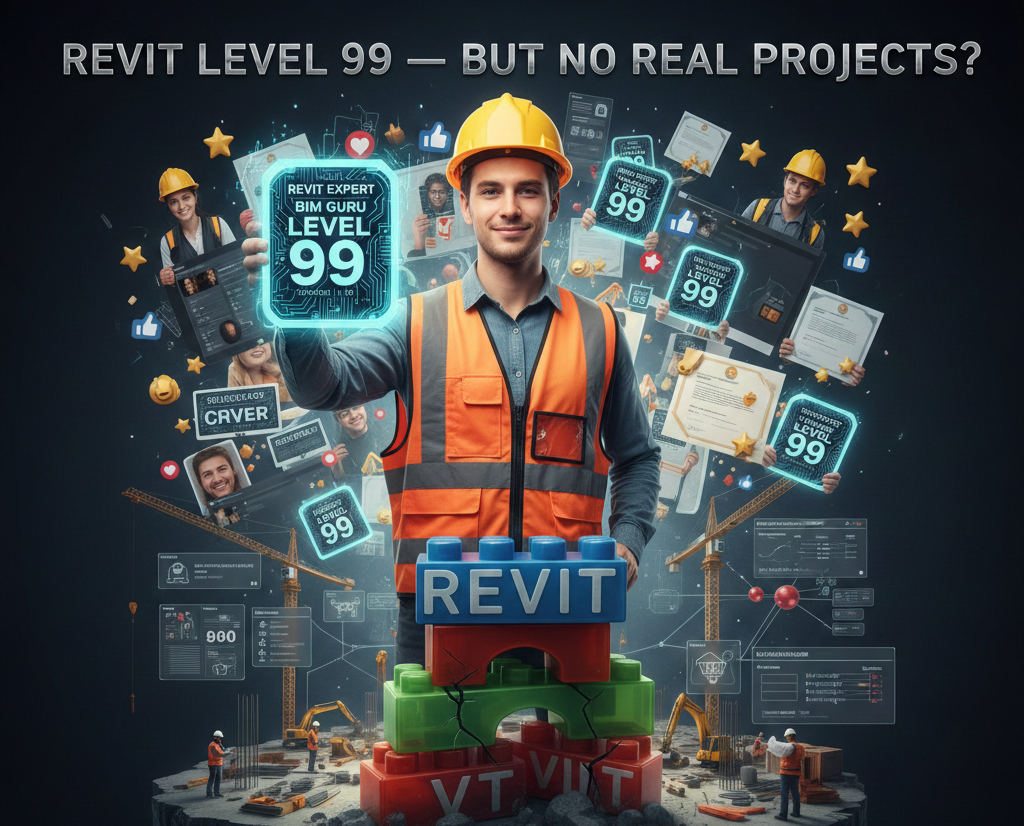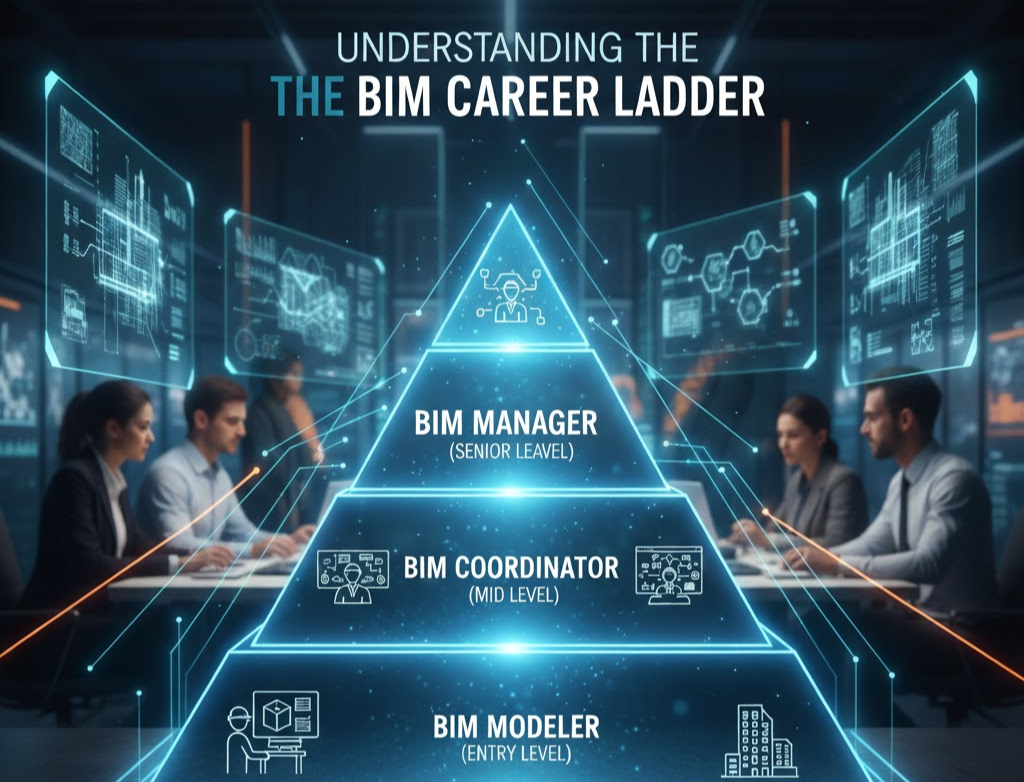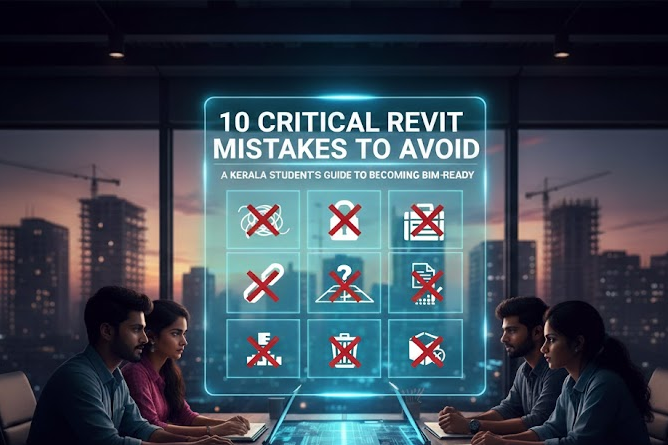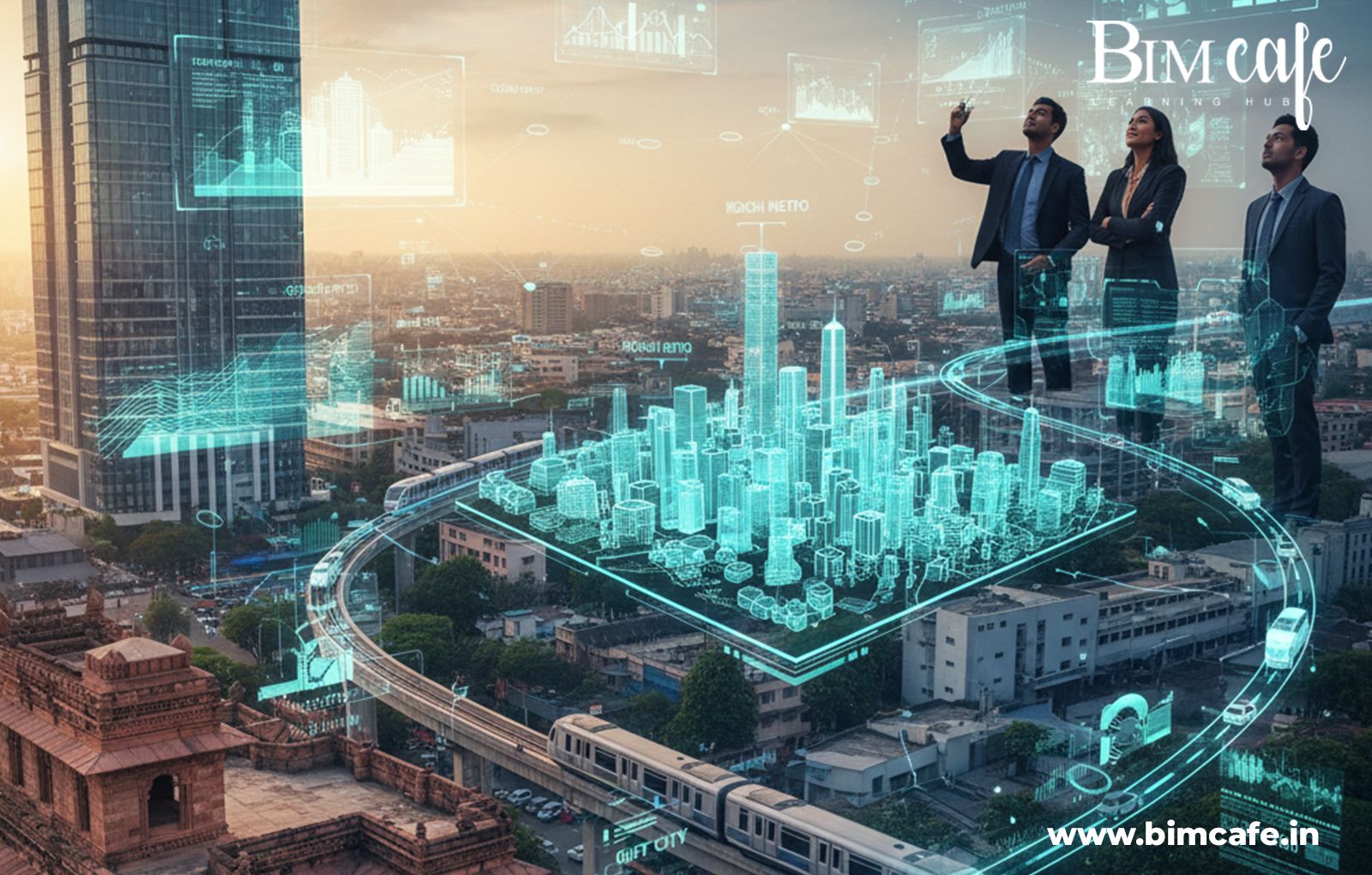
Author: Devika R
October 31, 2025
6 min read
India’s ambitious Smart City Mission is reshaping how infrastructure is designed and delivered. From Kochi Metro Rail to GIFT City in Gujarat, modern projects are moving away from traditional workflows and adopting Building Information Modelling (BIM) — the digital language of intelligent urban development.
For architects, civil engineers, and MEP professionals across Kerala, mastering BIM today means becoming part of India’s digital construction revolution tomorrow.
What Makes a City ‘Smart’ — and Where Does BIM Fit In?
A smart city is more than a cluster of buildings connected by roads and utilities — it’s a living network where infrastructure, technology, and citizens interact efficiently. The goal is to create urban environments that are sustainable, data-driven, and responsive to the needs of their residents. From smart water systems and integrated transport corridors to automated waste management and energy-efficient buildings, every component must function in harmony.
Achieving this level of coordination requires a unified digital environment, and that’s precisely where Building Information Modelling (BIM) plays a transformative role. BIM serves as a collaborative framework that connects all stakeholders — architects, engineers, contractors, and government planners — on a single digital platform. It replaces siloed workflows with coordinated, real-time information exchange, helping teams visualise, simulate, and optimise every aspect of urban infrastructure.
How BIM Transforms Smart City Development
1. Digital Twins – BIM enables the creation of data-rich digital twins, virtual replicas of real-world assets like roads, bridges, and utility networks. These live models allow city planners to monitor performance, predict maintenance needs, and simulate future upgrades before they happen.
2. Multi-Discipline Coordination – Traditional projects often suffer from design clashes and communication gaps between different disciplines. BIM integrates civil, architectural, structural, and MEP systems into a single model, ensuring that every pipe, duct, and beam fits perfectly — reducing rework and costly delays.
3. Lifecycle Efficiency – A smart city’s infrastructure must perform optimally over decades. BIM supports whole-life asset management, from design and construction to operation and maintenance. By integrating scheduling (4D), cost (5D), and facility data (6D), it helps reduce material waste, duplication, and operational inefficiencies.
4. Informed Decision-Making – BIM empowers urban authorities with data-driven insights for planning and governance. By analysing performance metrics — energy use, water flow, or structural stability — decision-makers can allocate resources strategically and make proactive interventions.
By uniting design and data, BIM helps smart cities evolve sustainably while reducing project costs and delays.
Real-World Examples: India’s Smart Cities Using BIM
Kochi Smart City, Kerala
Kochi is rapidly transforming into one of India’s most BIM-driven urban centres. The city’s major infrastructure developments — including metro rail expansions, IT parks, and advanced data centres — are now powered by BIM integration. Through digital coordination, every structural component, from underground utilities to architectural facades, is designed and aligned with precision. This minimizes errors, reduces rework, and ensures faster, more cost-effective construction. Kochi’s BIM adoption reflects Kerala’s growing emphasis on sustainable and technology-enabled urban development.
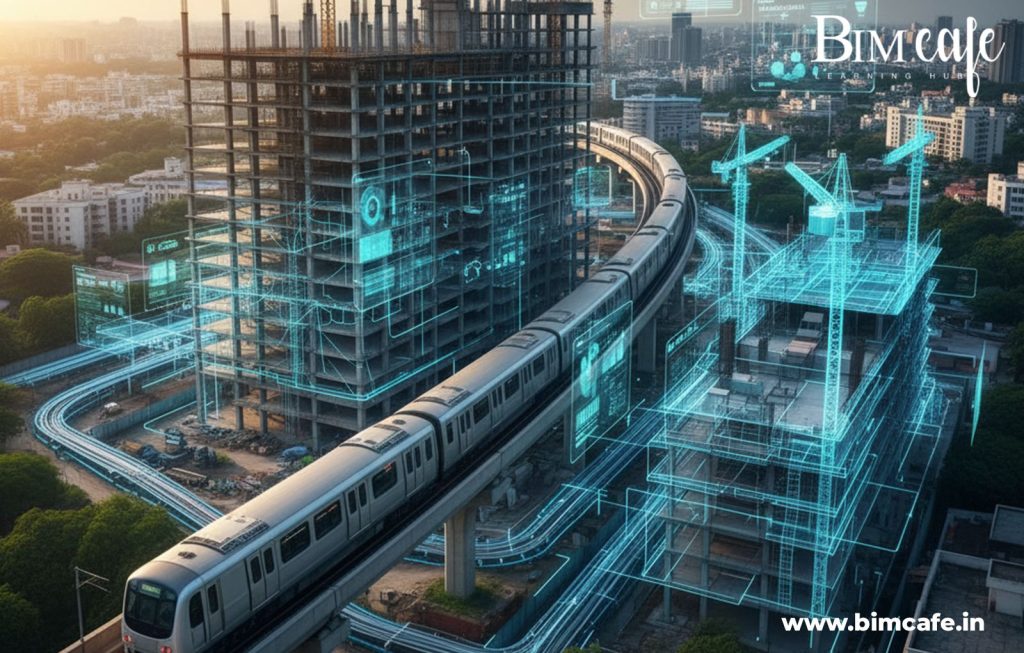
Amaravati & GIFT City
Both Amaravati in Andhra Pradesh and Gujarat International Finance Tec-City (GIFT City) represent India’s vision of future-ready smart cities. Their master plans are fully BIM-based, integrating transportation networks, public utilities, and building infrastructure into a single collaborative model. This unified digital framework allows seamless coordination among architects, engineers, and planners — ensuring that large-scale developments maintain coherence, transparency, and efficiency from concept to completion.
Delhi–Mumbai Industrial Corridor (DMIC)
As one of India’s largest and most ambitious infrastructure initiatives, the Delhi–Mumbai Industrial Corridor spans multiple states and industrial zones. BIM plays a crucial role in its integrated planning, logistics coordination, and project monitoring. By enabling real-time data visualization and cross-disciplinary collaboration, BIM ensures that each segment of the corridor meets its technical, operational, and sustainability benchmarks.
These examples collectively highlight how BIM has become central to India’s smart city and infrastructure revolution, shaping the blueprint for efficient, sustainable, and digitally governed urban spaces.
Why BIM Skills Are Essential for Engineers & Students
With organizations like CPWD, NBCC, and various Metro Rail Corporations mandating BIM workflows, there’s an increasing demand for professionals who can manage digital collaboration and data integration. Engineers, architects, and construction managers with BIM expertise are now vital to the nation’s smart city initiatives.

Top In-Demand Roles in Smart City BIM Projects
| Role | Key Responsibility |
| BIM Modeler | Develops accurate 3D and 4D models for infrastructure projects |
| BIM Coordinator | Integrates multidisciplinary data into unified project models |
| BIM Engineer | Conducts clash detection, model validation, and data analysis |
| BIM Manager | Oversees BIM workflows, ensures compliance, and maintains standards |
According to NASSCOM’s BIM Outlook 2025, India will require more than 40,000 skilled BIM professionals to meet the growing demands of infrastructure and smart city projects over the next few years.
BIM Cafe Learning Hub: Training Kerala’s Smart-City Workforce
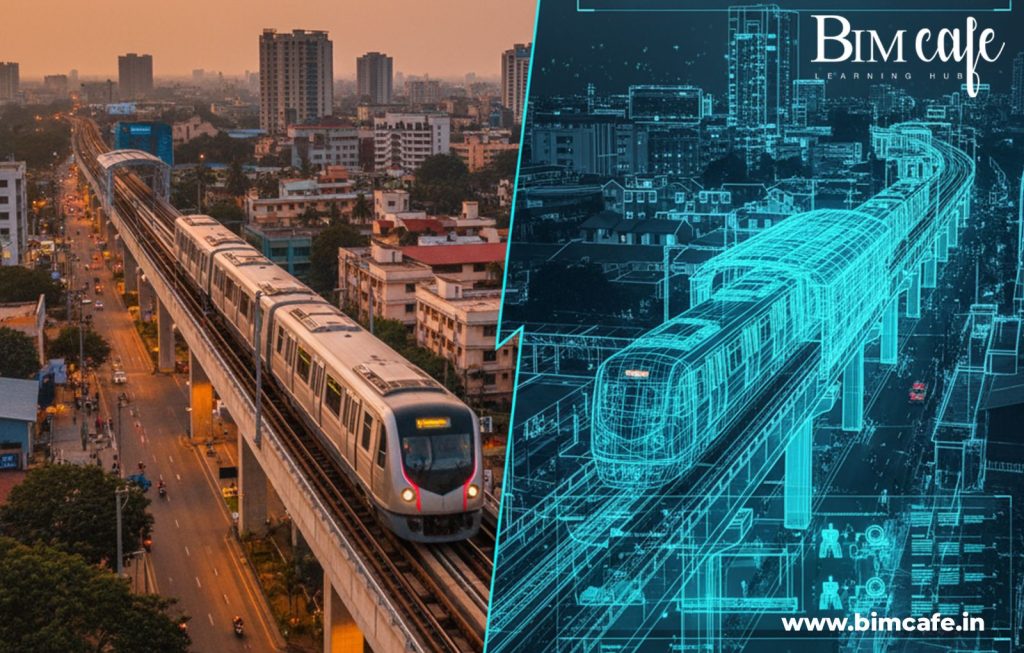
Kerala is fast becoming a hub for BIM education, and BIM Cafe Learning Hub, an Autodesk Certified Partner, is at the forefront of this transformation. The institute bridges the skill gap by providing industry-aligned training that prepares learners to participate in national-level smart city initiatives.
Why Choose BIM Cafe for Smart-City-Ready Training
- Project-based learning with real-world infrastructure case studies
- Autodesk-certified tools, including Revit, Navisworks Manage, BIM 360, and Recap Pro
- ISO 19650 & COBie compliance modules for global standardization
- Guaranteed placement support through DDG BIM Services
- Specialized learning tracks for Civil, MEP, and Interior Design professionals
These comprehensive programs empower students and professionals to handle complex digital project environments with confidence and precision.
Explore our related courses:
Professional BIM Course
BIM Intensive Training
How BIM Builds Sustainable and Resilient Cities
Beyond operational efficiency, smart cities must also be environmentally responsible. BIM contributes directly to sustainability by integrating simulation, optimization, and predictive modelling into every phase of design and construction.
Sustainability Advantages of BIM
- Energy Efficiency – Enables daylight analysis, HVAC simulation, and energy modeling at the design stage.
- Water and Waste Management – Facilitates the creation of smart utilities and conservation networks.
- Material Optimization – Reduces waste through precise quantity take-offs and material tracking.
- Predictive Maintenance – Uses digital twins to identify potential issues and schedule proactive maintenance.
In Kerala, for example, BIM-enabled water distribution models are being used to detect leaks, balance energy consumption, and improve operational sustainability — supporting the state’s vision for green, data-driven urban infrastructure.
The Future: AI + BIM = Smarter Cities
The future of urban development lies in the convergence of Artificial Intelligence (AI), the Internet of Things (IoT), and Building Information Modeling (BIM). This integration is redefining how cities are designed, built, and managed — creating connected ecosystems that respond dynamically to human and environmental needs.
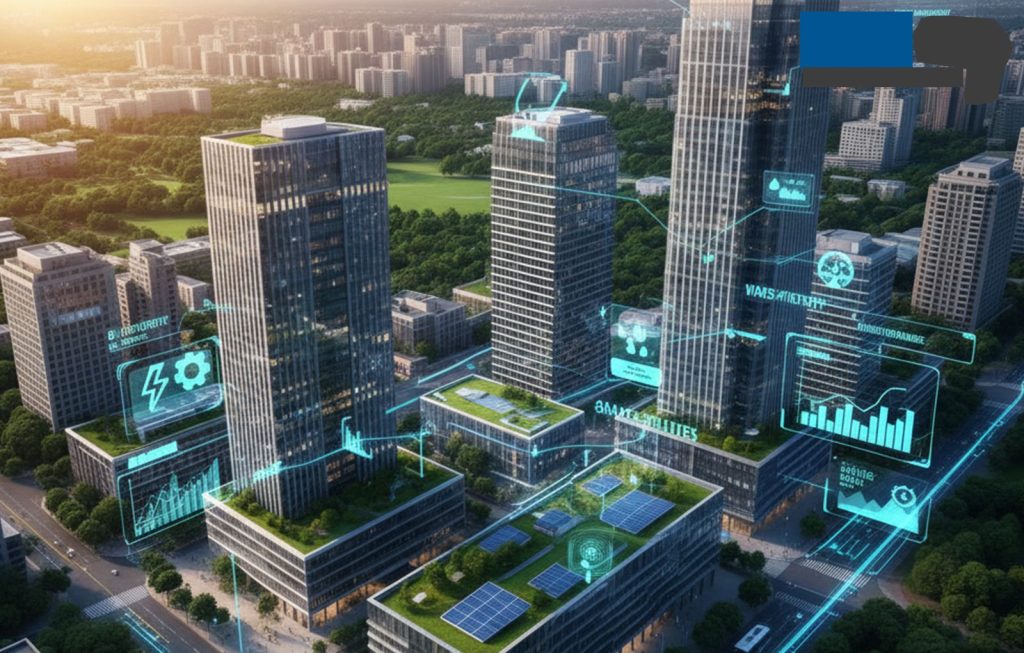
How AI-Enabled BIM Is Transforming City Infrastructure
- Automated Design Validation: AI-driven BIM platforms can automatically detect design clashes, structural inconsistencies, and workflow inefficiencies long before construction begins. This dramatically reduces costly rework and accelerates project timelines.
- IoT Data Integration: With IoT sensors embedded across roads, buildings, and utilities, BIM systems can now receive live data feeds on traffic flow, energy use, and water distribution. This real-time intelligence helps urban planners make data-backed decisions for better city management.
- Predictive Maintenance: AI-powered analytics within BIM environments can forecast maintenance schedules and detect potential failures early. Whether it’s an HVAC system in a smart building or an underground water pipeline, predictive modeling ensures greater efficiency, safety, and resource conservation.
- Generative Design: Advanced AI algorithms can generate design alternatives that optimise material use, energy performance, and space efficiency — ensuring that each project meets sustainability targets and cost objectives.
Professionals who master BIM today will be at the forefront of tomorrow’s AI-driven, data-smart transformation.
For deeper insight into how global standards shape this evolution, read our guide on “BIM Standards Around the World” to understand how India’s smart city frameworks align with international benchmarks.
Conclusion: Be a Part of India’s Smart Future
BIM is far more than a software platform — it is the foundation of digital infrastructure management and the backbone of future-ready smart cities. As India’s urban landscape expands through large-scale projects like Kochi Smart City, GIFT City, and the Delhi–Mumbai Industrial Corridor, the demand for BIM-trained professionals will continue to rise across design, construction, and facility management sectors.
Whether you are an architect, civil engineer, MEP designer, or project manager, the BIM Cafe Learning Hub provides the expertise and practical training needed to lead this transformation. By mastering tools like Revit, Navisworks Manage, BIM 360, and Recap Pro, and aligning with ISO 19650 global standards, you position yourself to play a pivotal role in India’s digital construction revolution.
Train smart. Build smart.
Join the Smart City Revolution — powered by BIM.
